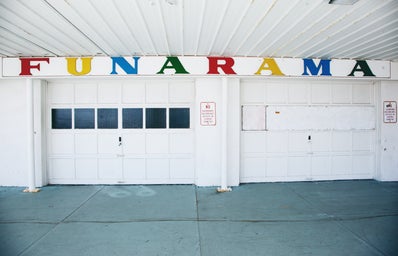There’s a theme in College Park: new, new, new. New apartment buildings, new academic buildings, new restaurants, even a new Metro line.
All of this development is in line with College Park’s goal to become a “Top 20 College Town” by 2020.
In 2011, university and local officials announced this goal and the city and university have been working on it since, with the help of College Park City-University Partnership, a nonprofit organization.
Issues in College Park to be addressed included a lack of affordable food and transportation as well as a dull downtown area. Here’s why they were issues and what College Park has done to fix them.
Food desert
In 2015, the Agriculture Department recognized College Park as a food desert, an urban area where it is difficult to access or afford fresh food.
Image by Frauke Feind from Pixabay
This was a major problem for the university and the surrounding city because it did not incentivize university employees to live nearby. It also affected over half of the undergraduate student population who did not live on campus and had no or limited access to campus dining facilities.
Since then, several grocery stores and supermarkets have opened in the area, including Lidl. Lidl is located on Route 1, less than a mile from campus.
Adding grocery stores and supermarkets is intended to help College Park become a more desirable place to live, especially for university employees.
Transportation
Limited parking due to construction and expensive parking permits — a yearly parking permit for an on-campus resident costs $650 — prevents many students from bringing cars to campus. This has made getting around campus and the surrounding area difficult for many students.
The university shuttle services now include 75 vehicles on 37 different routes.
College Park is less than 10 miles from Washington D.C., and yet it can take students who don’t have access to cars over an hour to walk to a bus stop, go to the metro station and ride the metro into the heart of D.C.
To help bridge the connection between those in the areas surrounding D.C. that are lesser served by Metro, another line is being built. The purple line will run up Campus Drive, through the heart of campus, allowing for easier transportation around College Park and Washington, plus reducing the number of cars on the roads. The new line is expected to be completed in 2022 or 2023.
However, critics of the purple line are concerned that the construction of a Metro line through campus will encourage apartment buildings nearby to increase monthly rents.
Some are also concerned that the Metro will disrupt campus traffic and be more of a hassle than it’s worth.
“I think the location on campus is really inconvenient. Since it’s above ground, it will hold up the traffic of students trying to get to class and cars trying to get down Campus Drive,” said sophomore architecture major Hannah Brayshaw.
Vibrancy
It’s pretty simple. If a city is ugly, people will not want to live there. College Park and the University of Maryland recognized this and have made efforts to make downtown College Park a nicer area.
The College Park City-University Partnership is also using public art as a means to increase the liveliness of the area. A new mural was installed on Route 1, facing Knox Road this month.
Eric Olson, the executive director of the College Park City-University Partnership said he thinks the mural, which features the Checkerspot butterfly, black-eyed Susan and diamondback terrapin, will help College Park become a top 20 college town.
He said many top college towns have some kind of public art and “we’re doing the same.”
Art, Olson said, “creates a certain vibrancy.”
Photo by Colleen Neely
Regardless of how residents feel about College Park’s transformation, one thing’s certain: College Park is changing every day.



